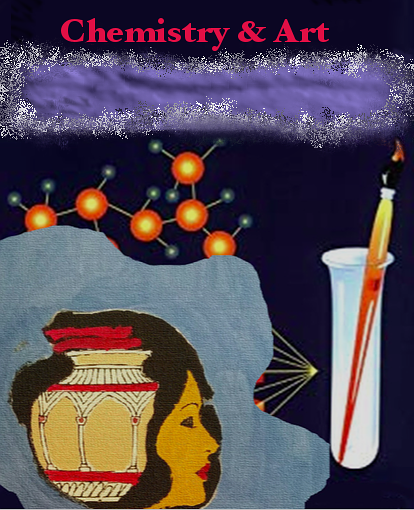Novel Paint Formulation
-Lanolin/ Synthetic Petrolatum Emulsions-
David S. Soriano
Watercolor / Gouache or Oil-Based Paints can be utilized.
I am a chemistry professor , University of Pittsburgh-Bradford (PA., USA), and amateur (self-trained artist). My current research focus is on novel paint formulations for use by artists. The following disclosure is based on recent research I have conducted. I place it in the public domain for artists and chemists to study and develop; if you choose to utilize my findings, by all means do so, but please acknowledge my efforts. Contact me with any questions that arise!
Lanolin hydrolyses/ transesterifications have long been known to release the long-chain aliphatic alcohols (there are between 8,000-20,000 components of various lanolins produced by wool-bearing species) which , to cosmetic chemists, have been known as onbe of the most powerful water/oil emulsifiers known. The alcohols can be separated from the saponified fatty acid carboxylates by acetone extraction, for example.
Saponification, among other methods, can be used to afford the lanolin soap by heating lanolin, water and sodium hydroxide at 50-70 deg C for 4-6 hours.
I carried out the saponification in glycerol at a temperature range of 120-140 deg C over 1.0 hour where changes in solubility, color and viscosity are observed.
Experimental Procedure:
4.0 g sodium hydroxide is first dissolved in 25 ml of glycerol with stirring. At a temperature of about 120 deg C , a bright yellow homogeneous solution is afforded. At this time, 25 g of molten lanolin (Fisher Scientific) is added in small portions over 1-2 minutes and heating continued with stirring for 1-1.5 hrs. at a temperature range of 120-140 deg C. The homogeneous solution is cooled to ambient temperature to affords the lanolin dark amber soap. A portion of this material can be mixed with about 1-5% (by mass) "Span 20" (a non-ionic surfactant) to provide a smooth emulsifying cream , of course, containing glycerol.
The bulk of the material was treated , in small portions, with 10% H2SO4 , to PH=1 ( it was about PH=13 before acid addition).The solution is stirred with light warming ( 40 -45deg C) to a beige-colored lotion after about one hour. The cooled solution is filtered through a strainer to remove small amounts of residual soap.
About 10 ml. of this lotion is mixed with about 5ml of a commercial gouache paint; I used red hue for the purposes of outline here) . To the homogeneous solution is added about 5 g of a petrolatum ( I have uploaded a description of a synthetic petrolatum which I have prepared from renewables. Such synthetic petrolatum materials are 'elegant' which in the world of cosmetic chemistry means 'non-greasy'. The well-stirred emulsion rapidly becomes homogeneous and additional materials such as kaolin clays can be added for impasto painting techniques , if desired. I work on bristol (140 lb. range) paper foundation and lanolin materials are known to be excellent sealers on supports such as bristol paper.
I applied the test emulsified paint to bristol with/ without undercoats ( I used hard/ soft pastels, dustless chalk and oil pastels ( another area of my reszearch) such as commercial 'Cray Pas' (the original manufacturer , back to 1925 in Japan).
The water and glycerol (more slowly , of course) will evaporate and I use some linseed oil in my synthetic petrolatum which is expected to 'dry' over a few days- dry to the touch.
I used both flat and bristle brushes and some 'Gold Bond' foot powder to the paint really helps with brush flow. The powder has talcum, zinc oxide, acacia and other components.
I am studying a range of kaolin clays and greatly prefer 'halloysite' kaolin clay which comes from a new quarry in Idaho, USA. I can supply the name of the manufacturer , upon request.
Below are selected images of the research effort:
A sample of cooled saponification (soap) substance.







No comments:
Post a Comment
Note: Only a member of this blog may post a comment.